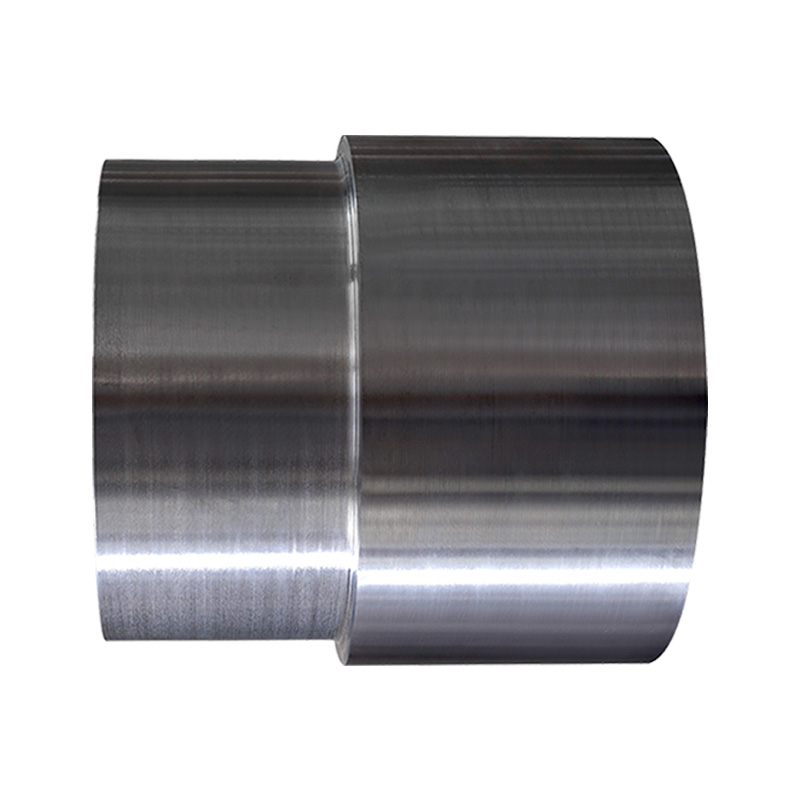The alloy steel forgings used in mining machinery are mainly divided into three categories based on the total amount of alloy elements added inside. This category is directly related to whether it can withstand construction, whether it is worth spending money on, and where it is suitable for use:
1. Low alloy steel forgings:
•How much was added? The total amount of alloying elements is not added much, and each type is also added less, with fewer types.
•Where is the skill? The core skill is much stronger and tougher than ordinary carbon steel, especially not easily brittle in cold weather. It can be tempered more thoroughly (the heart of a big guy can also be hardened). It's relatively easy to weld and process. Wear and corrosion resistance is slightly stronger than carbon steel, but not the main focus.
•What do you do in the mine? The main force of key components in mining equipment that are prone to heavy beating, impact, and easy exhaustion. For example, the connecting rods, pins, gears, and transmission shafts of large excavators, the frame connectors and suspension components of mining trucks, as well as various important structural components and large bolts.
2. Medium alloy steel forgings:
•How much was added? The total amount of alloying elements has increased, and the types may be more diverse, or certain elements may be added more aggressively (such as chromium Cr, molybdenum Mo, vanadium V, nickel Ni, etc.).
•Where is the skill? More durable, impact resistant, and thoroughly quenched than low-alloy steel. The special ability to resist wear is a highlight. The heat resistance has also improved (it is not easy to soften at high temperatures and maintains good strength). The corrosion resistance may be improved depending on the specific formula.
•What do you do in the mine? Used in mining equipment where the environment is more harsh and the requirements are higher. For example, components with severe wear and tear but still need to withstand some impact (such as certain lining plates, wear-resistant plates, and excavator bucket tooth bases), or components that require energy to work in hot places (such as equipment parts for handling hot materials), as well as critical shafts or gears that are large in size, thick in wall, and require the entire core to be hard.
3. High alloy steel forgings:
•How much was added? The total amount of alloying elements added is very large, often with one or several elements added particularly aggressively (such as high chromium Cr, high manganese Mn, high nickel Ni, or expensive ones like tungsten W and cobalt Co).
•Where is the skill? Playing with extreme performance. Either it has excellent wear resistance (like some tool steels), super corrosion resistance (like stainless steel), or special resistance (such as non-magnetic or being able to withstand strong corrosion at high temperatures). The cost is usually more brittle, harder to weld, harder to process, and extremely expensive.
•What do you do in the mine? Specializing in the most abrasive, corrosive, and deadly components in mines. Typical examples are those things that directly hit hard stones and are violently ground by high-speed impact, such as hammer heads that break, plate hammers that break by counterattacks, cone walls that break, and broken walls (dynamic cones/fixed cone liners). It is also used in key areas with strong corrosive environments (such as components that carry corrosive slurries in mineral processing plants), or in situations where special functions are required.
| Class | Alloy Content Level | Key Performance Focus | Typical Mining Applications | Cost & Workability |
| Low-Alloy Steels | Low total content. Few types, limited amounts. | Stronger & Tougher than carbon steel. Better low-temp toughness & hardenability. Decent weldability/machinability. | Structural & transmission workhorses: Excavator links/pins/gears/shafts, truck frames/suspension, critical bolts. | Most economical. Generally easier to work with. |
| Medium-Alloy Steels | Moderate total content. More types/higher levels of key elements (e.g., Cr, Mo, V, Ni). | Enhanced strength/toughness/hardenability vs. Low-Alloy. Significantly better wear resistance. Improved hot strength/resistance to softening. | Critical parts under harsher conditions: Wear parts needing impact resistance (some liners, adapters), hot service components, large/thick critical shafts & gears needing deep hardening. | Higher cost than Low-Alloy. More demanding processing. |
| High-Alloy Steels | High total content. Often very high levels of specific elements (e.g., high Cr, high Mn, high Ni, W, Co). | Engineered for extremes: Exceptional wear OR corrosion resistance OR special properties (heat resistance, non-magnetic). Performance often dominates over toughness/workability. | Severe duty/specialist parts: Direct impact/abrasion points (crusher hammers/liners/breaker plates), strong corrosive environments (slurry parts), unique property requirements. | Highest cost. Often challenging to weld/machine. |

 英语
英语 德语
德语 阿拉伯语
阿拉伯语












